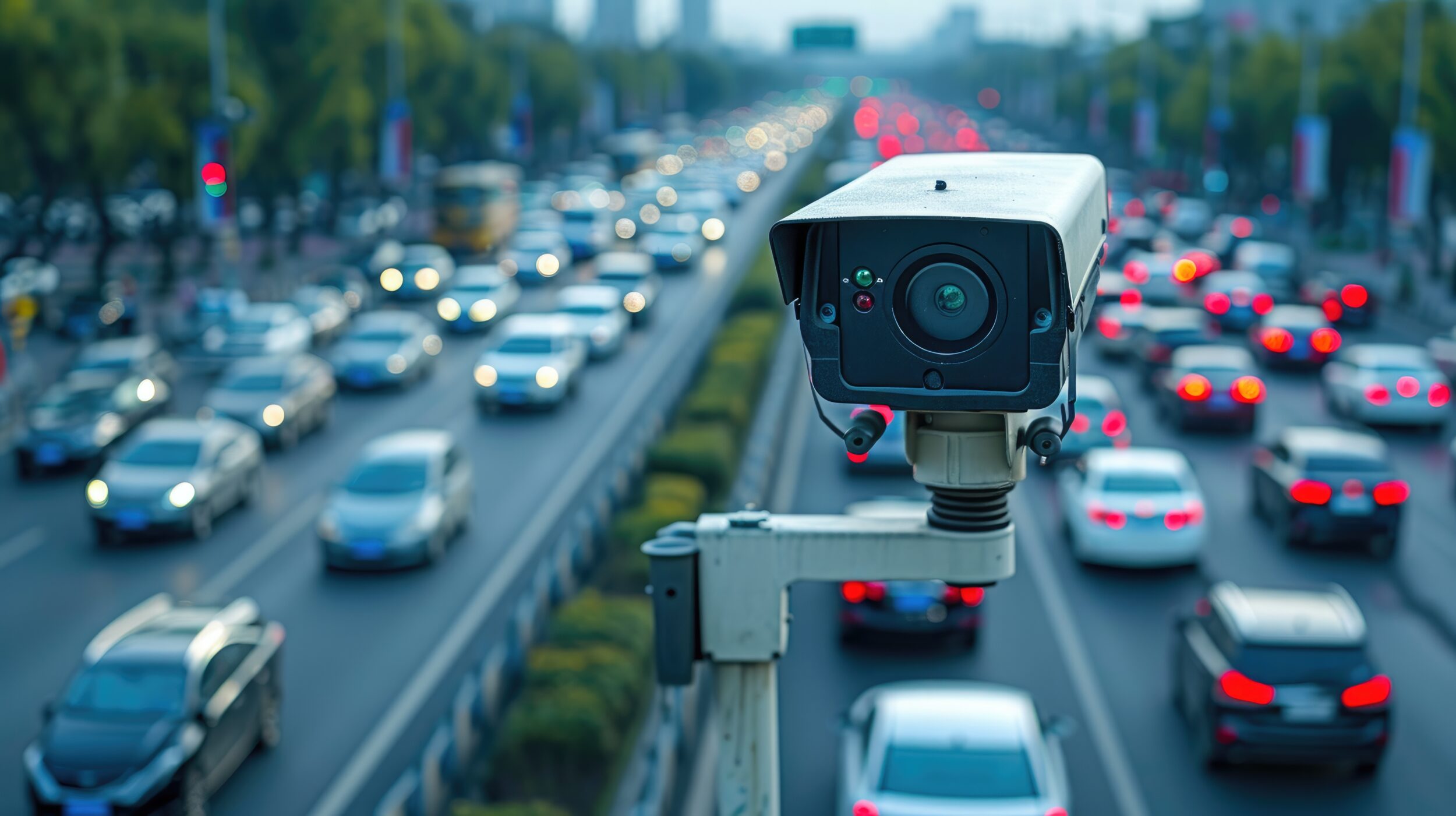Modern road safety programs aim to create safer environments by addressing multiple elements of driving behavior that lead to accidents. Among these tools, speed enforcement cameras play a critical role in mitigating speeding, a primary cause of road accidents and fatalities. When integrated with other safety-focused monitoring technologies—like seat belt and red-light cameras—they form a cohesive strategy to enforce traffic laws, deter risky behavior, and enhance public safety.
At the heart of these integrated systems is the Intelligent Transport Management System (ITMS), which enables real-time data collection, analysis, and automated responses. This article examines how speed enforcement cameras contribute to holistic road safety programs, the synergy between different types of traffic cameras, and the role of ITMS in coordinating these efforts to create a safer driving environment.
1. The Role of Speed Enforcement Cameras in Road Safety
Speed enforcement cameras are designed to monitor and regulate vehicle speeds on roads, targeting areas prone to speeding and high-risk locations such as intersections and school zones. Their benefits to road safety include:
- Deterrence of Speeding Behavior: The visible presence of speed cameras serves as a deterrent, encouraging drivers to obey speed limits. Studies have shown that speed cameras can significantly reduce average driving speeds, particularly in high-risk areas.
- Reduction of Traffic Accidents: Speeding contributes to severe accidents with higher fatalities and serious injuries. Speed cameras reduce this risk by promoting compliance with speed limits, resulting in fewer and less severe crashes.
- Data Collection for Traffic Analysis: Speed cameras collect valuable data on traffic patterns, peak speed times, and high-speed zones. This data, integrated within an ITMS, helps authorities understand traffic behaviors and implement additional road safety measures.
2. Integrating Speed Enforcement Cameras with Seat Belt and Red-Light Cameras
While speed enforcement camera system target one aspect of unsafe driving, their effectiveness is magnified when combined with other types of cameras:
- Seat Belt Cameras: Many fatalities in road accidents can be attributed to the non-use of seat belts. Seat belt cameras detect and issue fines to drivers and passengers who are not properly restrained. By addressing seat belt violations, road safety programs can reduce the severity of injuries sustained during crashes.
- Red-Light Cameras: Red-light running is another leading cause of severe intersection accidents. Red-light cameras monitor signal compliance, capturing vehicles that run red lights and issuing penalties to encourage adherence to traffic signals.
When speed, seat belt, and red-light cameras work together, they cover multiple aspects of driver behavior, creating a more comprehensive approach to road safety. For example, a vehicle speeding through an intersection without stopping at a red light could be flagged by both speed and red-light cameras, ensuring violations are addressed comprehensively.
3. Intelligent Transport Management System (ITMS): A Hub for Traffic Safety Integration
An Intelligent Transport Management System (ITMS) is essential for coordinating the inputs from various traffic monitoring devices and implementing an effective response to traffic violations. The ITMS acts as a central hub that processes data from speed enforcement, seat belt, and red-light cameras, allowing real-time analysis and rapid response capabilities. Key functions of an ITMS in holistic road safety programs include:
- Data Integration and Analysis: ITMS combines data from multiple cameras and sensors, providing a comprehensive view of road safety trends. For instance, if a specific intersection shows high rates of red-light violations and speeding, the system can flag it for further investigation or targeted enforcement measures.
- Automated Alerts and Law Enforcement Collaboration: ITMS can automatically alert law enforcement when certain thresholds of dangerous behavior are met. For example, if multiple speeding violations are detected in a short period, the ITMS can prompt a nearby police unit to monitor the area physically.
- Predictive Analytics and Safety Recommendations: By analyzing historical data, ITMS can predict where accidents are likely to occur and suggest preventive measures, such as increasing camera coverage, adding more visible signage, or adjusting traffic light timing to reduce intersection incidents.
4. Synergizing Camera Functions for Optimal Safety Outcomes
The integration of speed, seat belt, and red-light cameras through ITMS enables road safety programs to address different aspects of driver behavior in a synergized manner, enhancing overall effectiveness:
- Enhanced Compliance through Multidimensional Enforcement: A driver aware of multiple enforcement cameras on a single stretch of road is more likely to adhere to all road rules. For instance, a driver might slow down due to a speed camera, buckle their seatbelt due to seat belt cameras, and stop at intersections due to red-light cameras. This comprehensive approach ensures well-rounded compliance.
- Prioritization of High-Risk Areas: ITMS can analyze data to determine high-risk areas where multiple types of violations occur frequently. By concentrating camera resources in these areas, authorities can maximize the impact on road safety.
- Cross-Referencing Violations for Repeat Offenders: Using data from different types of cameras, ITMS can identify repeat offenders and escalate enforcement actions. For instance, a driver consistently detected for speeding and seat belt violations might face additional penalties or be flagged for direct law enforcement intervention.
5. Benefits to Public Safety and Reduction of Fatalities
By addressing speeding, seat belt compliance, and red-light adherence in an integrated manner, road safety programs see substantial benefits:
- Lower Accident Rates and Fatalities: Studies show that roads monitored by speed, seat belt, and red-light cameras collectively experience lower accident rates and fatalities. When drivers follow speed limits, wear seat belts, and obey traffic signals, the likelihood of severe accidents decreases.
- Increased Public Trust and Accountability: With ITMS managing traffic safety data transparently and enforcing traffic rules consistently, public trust in road safety measures increases. Consistent enforcement reassures the community that road safety programs are in place for everyone’s benefit.
- Resource Efficiency for Law Enforcement: Integrating various camera functions with ITMS allows for automation of many enforcement actions, freeing up law enforcement resources for other duties, such as patrolling and emergency response.
6. Challenges and Considerations in Integration
Despite its many benefits, integrating speed, seat belt, and red-light cameras with an ITMS presents several challenges:
- Privacy and Data Security: Managing sensitive data from different cameras requires robust security measures to prevent misuse or unauthorized access. Strict policies and advanced encryption are necessary to protect data within ITMS.
- Initial Infrastructure Costs: The setup of ITMS, cameras, and network infrastructure can be costly, particularly for smaller municipalities. However, the long-term benefits in accident reduction and enforcement efficiency often justify the expense.
- Public Acceptance and Perception: Some members of the public may view traffic cameras as intrusive or as a revenue-generating tool for the government rather than a safety measure. Transparent communication and community engagement are essential to building public support for integrated road safety programs.
7. Future Innovations in Traffic Camera and ITMS Integration
The future of integrated traffic safety programs lies in continuous advancements in camera technology, data analytics, and artificial intelligence:
- AI-Enhanced Camera Systems: Future cameras may incorporate AI to detect multiple violations simultaneously. For example, a single AI-enhanced camera could detect speed, seat belt, and red-light violations, reducing infrastructure costs and enhancing functionality.
- Predictive Traffic Control through Machine Learning: ITMS equipped with machine learning algorithms can predict traffic flow changes and adjust camera settings or traffic light timing dynamically to reduce accident risks in real-time.
- Vehicle-to-Infrastructure (V2I) Communication: As smart vehicles become more prevalent, they will be able to communicate directly with ITMS, enhancing the accuracy and effectiveness of road safety programs. For instance, vehicles could receive alerts from ITMS about upcoming cameras or dangerous intersections, prompting compliance without requiring camera enforcement.
Conclusion
Speed enforcement cameras, when integrated with seat belt and red-light cameras, provide a holistic approach to road safety. Coordinated through the Intelligent Transport Management System (ITMS), these technologies offer powerful tools to deter dangerous driving behaviors and promote safer roads. The synergy between different camera types and ITMS not only reduces accidents but also builds public trust in the effectiveness of road safety programs. As technology evolves, integrated road safety solutions will become increasingly efficient, adaptable, and essential for safer urban and rural roadways alike.
Keep an eye for more news & updates on ForbesZine!




